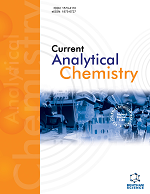
Full text loading...
We use cookies to track usage and preferences.I Understand

Particulate matter poses a significant risk to human health, particularly fine particulate matter, as it is difficult to eliminate and leads to severe health issues. Conversely, urban woody plants are experiencing ambient pollution directly and continuously adjusting to the dynamic contaminants, thereby improving the urban environment for their living circumstances. Thus, studies conducted at the level of individual leaves can offer important insights into the productivity of an ecosystem.
Leaf samples from three common woody plant species (Acer platanoides, Fraxinus excelsior, and Tilia tomentosa) in Budapest, Hungary, were collected throughout a vegetation phase. After ultrasonic wash-off, the chemical properties of dust deposits on the leaf surface were investigated.
Our results showed a higher concentration of wash-off fine particulate from F. excelsior than from A. platanoides and T. tomentosa, and the precipitation, maximum wind speed, and ambient particulate matter content did not demonstrate a significant impact on it. Thus, the fine particulate matter washed off from woody plant leaves involves a more dynamic and complex procedure. The analysis of chemical parameters demonstrated the interaction of particulate matter and the leaves; pH values varied, and the total electric conductivity was significantly higher than the accepted limits. The excessive concentration of sulphate and chloride in wash-off particulate matter indicated significant interference caused by human activities and secondary suspension.
Given that F. excelsior is more susceptible to having wash-off fine particulate matter, which can contribute to secondary suspension, the capability of A. platanoides and T. tomentosa to retain fine particulate may contribute to their effects in phytoremediation.

Article metrics loading...

Full text loading...
References


Data & Media loading...